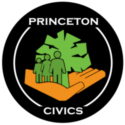Last month, a racist attack in the city of Buffalo reminded me of the importance of learning about prejudice, its history, and its impact in the world. For the 13 victims in Buffalo, no amount of education can restore their lives or remedy their pain, but how we as a community and a nation respond will honor them, and must serve justice to their names and all the victims of hate in this country.
The recent uptick in hateful violence demonstrates the harmful effects of insufficient education and upbringing. Yet, today in many schools we see a reverse trend: the prohibition of critical race courses, the removal of books discussing race and history from libraries, and most recently the banning of discussions surrounding gender minorities. To me, this is not only a problem due to the vitality of these discussions, but because I have experienced the widened perspective, deepened thought, and increased knowledge that such classes provide, and I know that removing them from the curriculum reduces the ability of students to engage with relevant issues in the world. Education which supports critical thought around issues of identity will help students become comfortable and safe with each other rather than feel threatened or frightened.
Specifically, students ought to be exposed to new ideas surrounding identity and history at a young age, particularly in elementary and middle school. While many are quick to point out how this may be destructive to a child’s sense of self, the amount of damage done to society when children are not exposed at a young age is much greater. Furthermore, when done correctly such exposure will strengthen a student’s understanding of the world around them, especially the people around them, but also widens their thought process about themselves, and begin to identify what makes them unique in this world. In Princeton’s elementary schools, the teachers do a tremendous job of building up an environment where students see their own identity in the myriad of different traits present in a classroom, and where students are able to learn about the differences in identity that separate them from others. Visiting Community Park Elementary School with Corner House Princeton, I was surprised to find how understanding each student was of their classmates background, origin, and culture, and I was even more surprised to hear how much these students knew about American history and the legacy of racism in America. Each student felt proud of their own identity as well, proudly showing off the parts of their life that made them unique.
Hate-motivated behavior is often found on school campuses, starting with bullying and harassment due to biases and prejudices. Although they often seem harmless and inconspicuous, prejudiced beliefs can easily be spread to students through even the smallest of actions. As a middle schooler, I remember other students laughing at my choice to bring tea to school. While I wasn’t personally offended by their laughter, I felt that it was disrespectful to my cultural background. Although I didn’t understand it at the time, and I’m sure they didn’t either, I now realize that these sorts of interactions reflect a lack of understanding and exchange of cultural ideas and customs. Here, education comes into play as a method to increase understanding of other cultures, leading to positive interactions around cultural topics, not negative ones.
However, what exactly does truly productive hate-correcting education look like? In our elementary schools, a few examples appear. First, students learn about hate in history, and not only about the wrongs, but especially about those who worked to fix those wrongs. At Community Park, students named Rosa Parks, Harriett Tubman, and Frederick Douglass as a few leaders who inspired them, evidence of how our education system has emphasized leaders of progress. Next, students learn to understand how they fit in the world with their identities and traits, and how that differs from their classmates. At the Charter School, students happily discussed how each person in their friend group was unique. Finally, students must learn to appreciate and build off each other’s differences, not shy away from them and tear them down. This final step is the most important, and here in Princeton I see it every day, from World Culture fairs and clubs, to students conversing in different languages, and the enjoyment of media and cuisine from different parts of the world.
With the heavily hate-driven atmosphere in today’s political world, and the growing prevalence of hate crimes, people have come up with many different theories on how to best stop hate. I believe education is the best tool we have as citizens to ensure a hate-free future for America.
— Han Li
